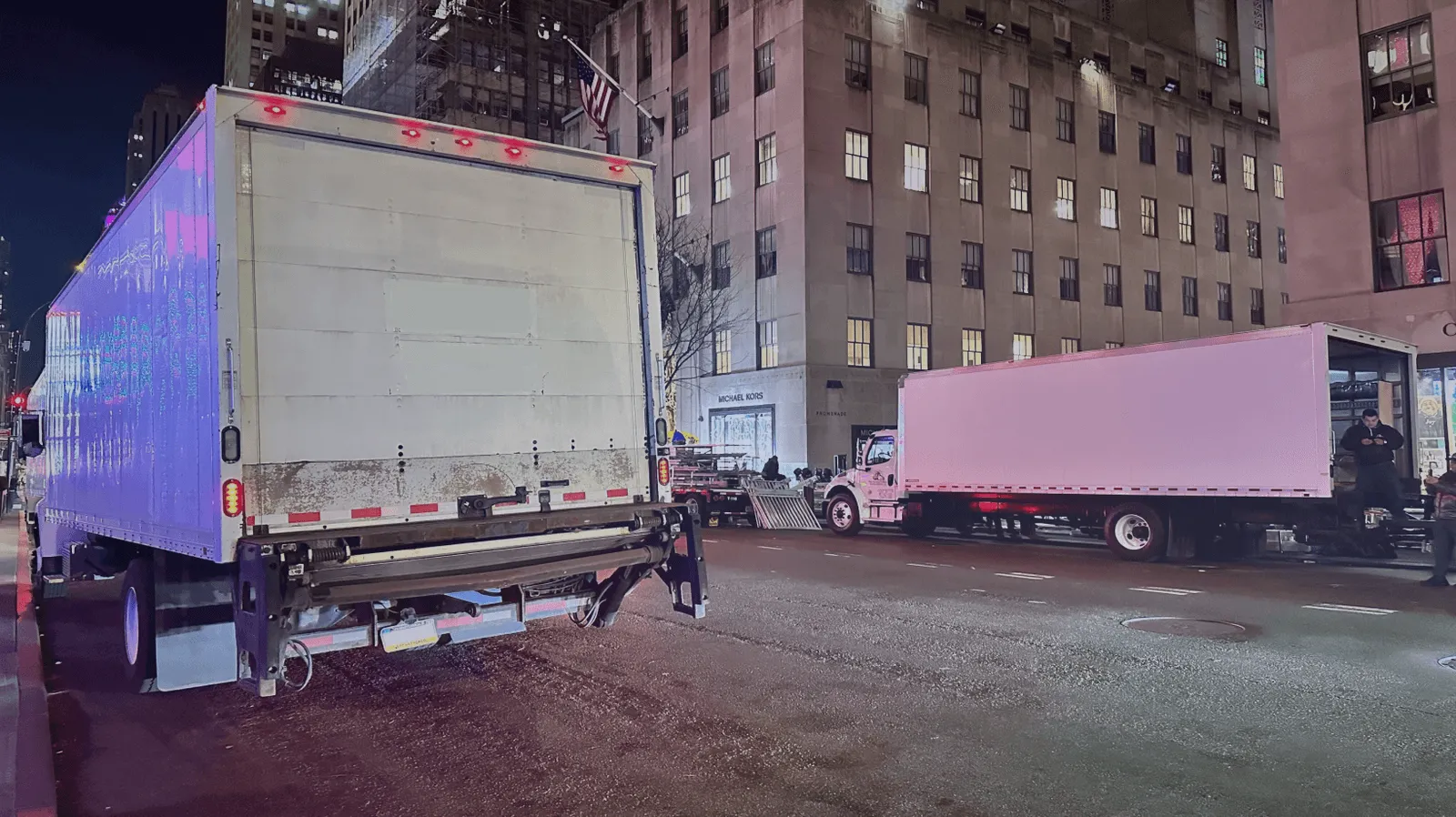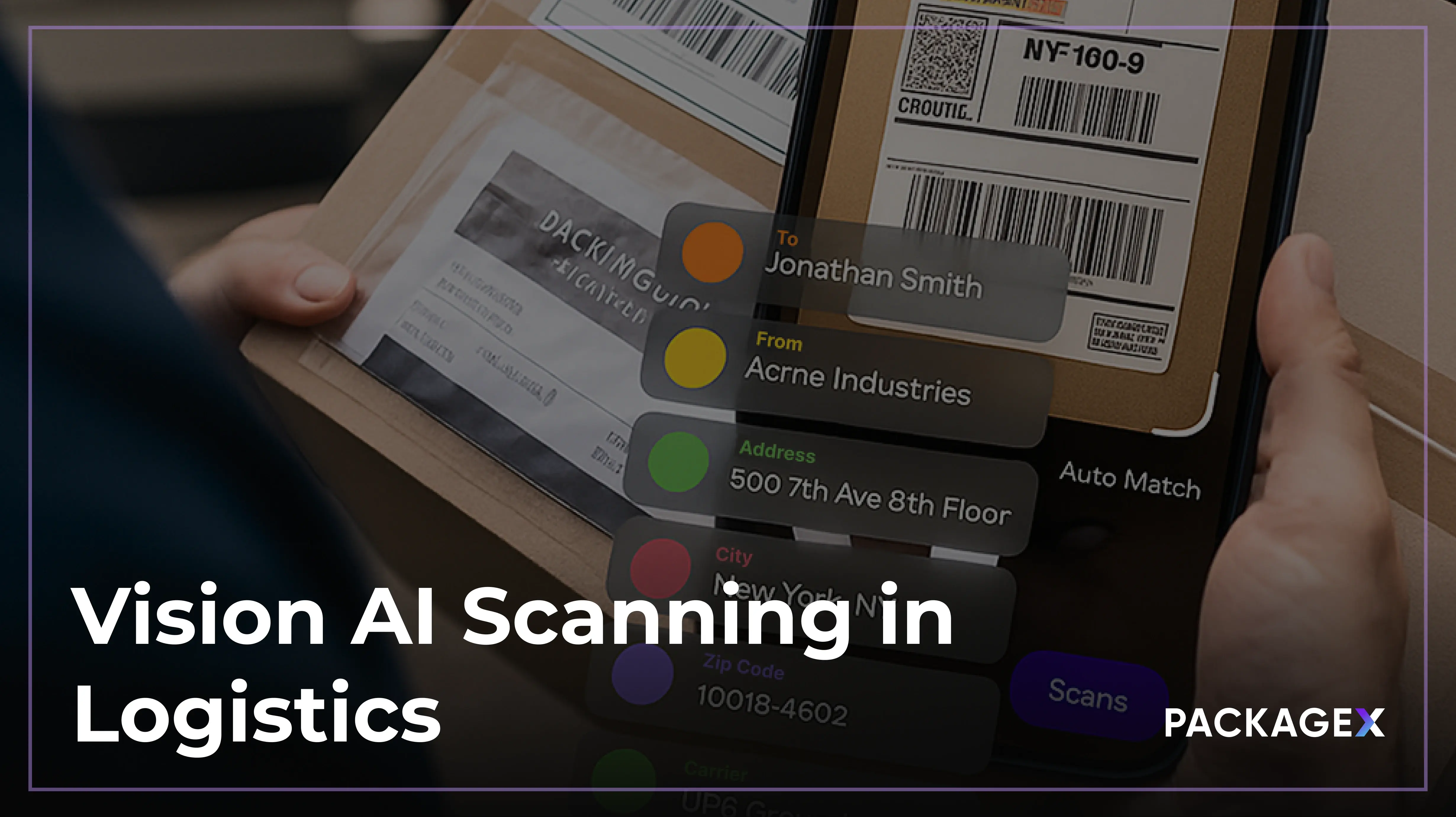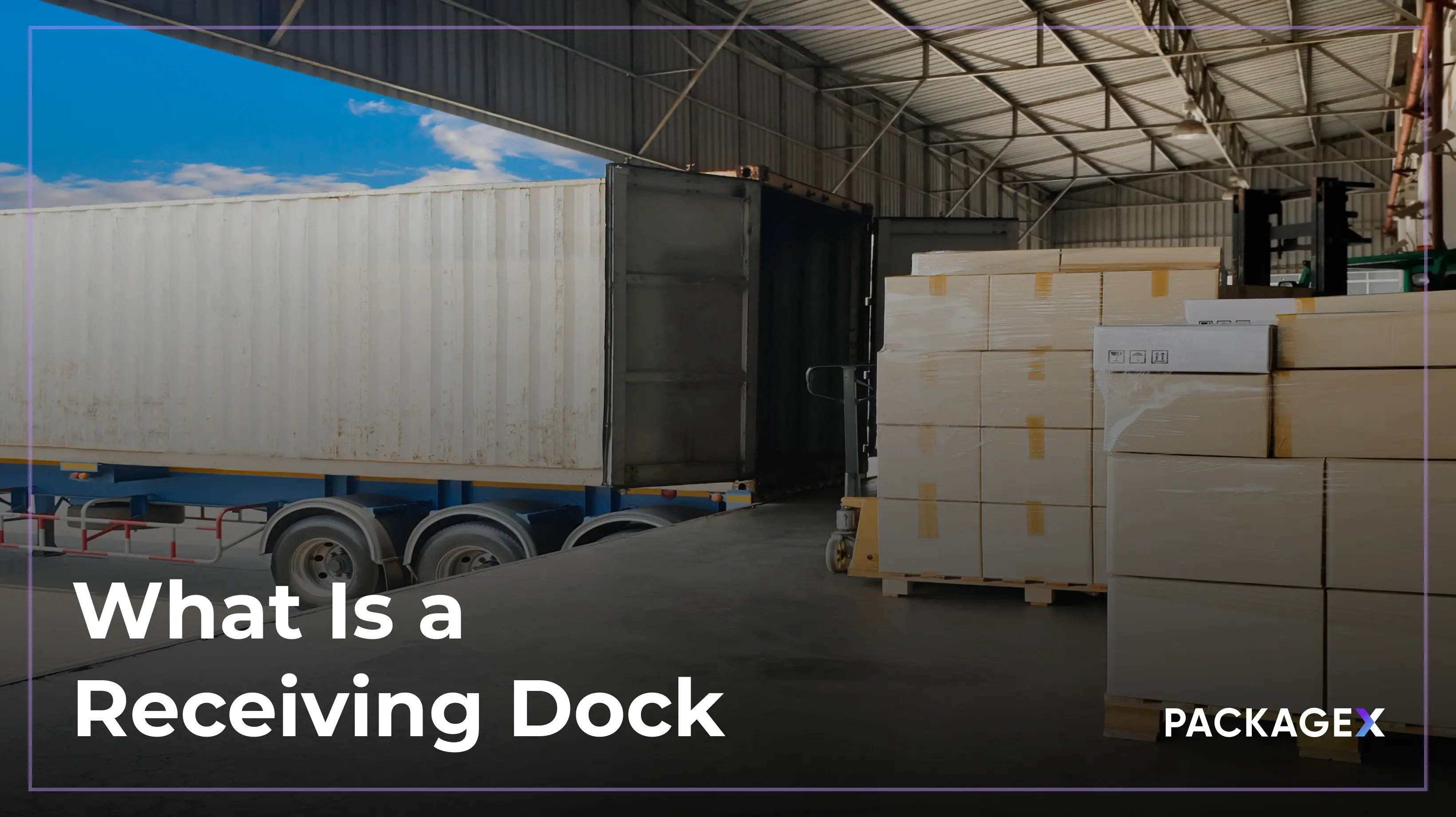Introduction
Outbound logistics is how a product gets from a manufacturer's warehouse into the customer's hands. There are many steps between these two points; we will cover them in this guide. Moving goods from the warehouse to the consumer must be seamless and efficient for organizations to maintain and build customer trust.
This guide will explain outbound logistics, the process, key metrics to measure efficiency, challenges, best practices, and how to enhance the overall process. Let's dive in!
What is Outbound Logistics?
Outbound logistics begins once a customer makes a purchase. It is one of the most critical roles in the supply chain process. As the final stage in getting the product to the end user, businesses must select the proper distribution channels, maintain an effective inventory management system, and optimize their distribution strategies to ensure the overall efficiency of the process.
Outbound Logistics VS Inbound Logistics
Inbound and outbound logistics have three standard components. They involve the movement of goods and providing services and play vital roles in the supply chain. An essential differentiator about outbound logistics is that it can be both B2B (wholesale) and B2C (home delivery), whereas inbound logistics are just B2B deliveries.
The Outbound Logistics Process
As previously mentioned, outbound logistics starts when an order is placed and payment is successful. The critical components of this process afterward are the warehouse receiving the order, items being picked and packed, the order being delivered, and finally, the organization measuring the success of the process.

The Importance of Technology in Outbound Logistics
Technology is crucial for logistics because it directly impacts the efficiency, accuracy, and scalability of operations in a rapidly evolving global supply chain. Without advanced solutions like AI, automation, and real-time tracking, companies face delays, human error, and inefficiencies that can cost millions. As consumer demand for speed and precision rises, outdated manual processes are no longer sustainable. Embracing technology is not optional but essential to remain competitive, meet service expectations, and drive long-term growth.
Some benefits of using technology in outbound logistics include:
- Improved efficiency: Technology can help with sorting and picking, which improves efficiency.
- Reduced risk: Technology tracking can help keep track of shipments and reduce the risk of lost shipments.
- Improved customer service: When products get to customers on time and are not damaged, it will keep them happy.
Role of automation and AI in streamlining processes
The role of automation and AI are becoming increasingly more common in the logistics space. AI scanning is improving efficiency at an astonishing rate. For example, with PackageX’s AI scanning, it’s possible to automate OCR, barcode, and vision scanning with APIs, apps, and SDKs. There are benefits for inbound receiving as well as outbound shipping. It’s crucial to bring up the inbound benefits because if you set yourself and your warehouse up for success from the initial delivery to the shop, it’ll make it easier to speed up the outbound workflows.
Also, generative AI can analyze vast amounts of data to predict demand, optimize inventory levels, and create efficient delivery routes. This reduces operational costs, improves delivery times, and enhances customer satisfaction.
Best Practices for Efficient Outbound Logistics
Delivering a package to its destination address is more complex than it seems. There are several stages involved in the logistics process. Every step needs to be coordinated with the other for smooth package delivery. The last step of logistics is also regarded as last-mile delivery. A report from Frost and Sullivan states that up to 40% of the logistics costs are associated with last-mile delivery. Given the importance of last-mile delivery, industry giants have been using it to ensure safe package delivery. Some best practices for efficient outbound logistics are:
Partnering with reliable carriers
Consider your options when choosing carriers. Don’t just go for the cheapest option; make sure you do your research. Building and developing strong relationships with logistics providers, distributors, and retailers will lead to more systematic logistics operations.
Optimizing routes for cost-effective transportation
Efficient route planning is critical to reducing transportation costs and improving delivery times. By analyzing factors such as traffic patterns, delivery windows, and fuel consumption, businesses can select the most cost-effective and timely routes for their shipments. Implementing route optimization software or tools can automate this process, reducing the likelihood of delays and minimizing unnecessary mileage.
Implementing real-time tracking and analytics
Real-time tracking is essential for staying informed about shipment statuses and ensuring timely deliveries. Integrating real-time tracking solutions allows companies to monitor shipments throughout delivery, providing visibility into potential delays, location updates, and estimated arrival times.
Emphasizing clear communication with customers
Clear and proactive customer communication is vital to maintaining satisfaction throughout shipping. Providing regular updates on order statuses, estimated delivery times and potential delays helps manage customer expectations and reduces the likelihood of dissatisfaction.
Improving Overall Logistics Management
Effective logistics management involves overseeing the entire outbound logistics process—from order processing and inventory management to transportation and final delivery. Leveraging a robust logistics management system helps streamline these operations by integrating warehouse management, transportation management, and customer communication into a single platform.
How PackageX Enhances Outbound Logistics
The PackageX Logistics Cloud modernizes inbound, outbound, and four-wall logistics for fulfillment centers and warehouses. The Platform’s flexible suite of apps and APIs can easily integrate with any technology stack to meet the unique requirements of logistics service providers, retail stores, and more.
PackageX’s OCR API streamlines inbound logistics operations by converting any smartphone into a powerful universal label scanner that reads every bit of text on the label, including barcodes and QR codes. This can be automatically matched against digital manifests and inventory or synced with an Order Management System (OMS).
Streamline four-wall logistics operations with flexible workflows to meet your sorting, storage, and order fulfillment needs. PackageX’s outbound logistics APIs automatically select the best rate for every package, plan for dispatch, and track the item’s journey to its final destination.
How Outbound Logistics Impacts Customer Satisfaction
From placing an order to the final delivery, every step of the shipping process directly impacts how customers perceive a brand. Timely deliveries, accurate order fulfillment, and clear communication can distinguish between a satisfied customer who returns for more and one who turns to a competitor.
The Role of Timely Delivery in Customer Experience
Timely delivery is one of the most crucial factors in customer satisfaction. In a market where consumers expect quick fulfillment, late shipments can lead to frustration and dissatisfaction. Meeting delivery expectations ensures customers receive their orders when promised, fostering trust and increasing the likelihood of repeat business.
The Importance of Transparency in Shipping and Delivery
Transparency in shipping is vital for managing customer expectations and maintaining satisfaction throughout delivery. Providing customers with real-time tracking information and proactive updates on shipment status helps build trust and reduces anxiety, mainly if delays or unforeseen issues occur. When customers have visibility into their order's journey, they feel more in control, which positively impacts their perception of the brand. Offering clear communication at each stage of the logistics process—order confirmation, shipment updates, and delivery notifications—ensures customers are well-informed and reassured, ultimately enhancing their overall experience.
Future Trends in Outbound Logistics
The logistics landscape is rapidly evolving, driven by technological advancements and changing consumer expectations. As e-commerce continues to surge, businesses are under pressure to deliver faster, more efficiently, and environmentally responsible. Emerging technologies like drones, autonomous vehicles, and AI-powered logistics systems are shaping the future of outbound logistics, while sustainability initiatives are becoming a top priority. In this section, we’ll explore the key trends to transform outbound logistics and how businesses can stay ahead in this dynamic environment.
The Rise of Same-Day and Next-Day Delivery Services
Customer expectations for rapid delivery have escalated, with same-day and next-day delivery becoming standard in many industries. This shift presents a significant challenge for logistics providers, requiring optimized route planning, local warehousing, and increased collaboration with carriers to meet delivery windows. Companies that offer faster shipping options while maintaining low costs are more likely to succeed in today’s competitive market.
Sustainable Logistics Practices (Reducing Carbon Footprints)
Sustainability has become a growing concern in logistics as consumers and businesses seek to reduce their environmental impact. Companies are adopting eco-friendly practices to address this, such as optimizing delivery routes to reduce fuel consumption, using electric vehicles, and implementing carbon-neutral shipping options. Sustainable packaging solutions and reducing waste in supply chains are also becoming key factors in logistics strategies. By prioritizing sustainability, companies reduce their carbon footprint and appeal to environmentally conscious consumers, enhancing their brand image and long-term competitiveness.
The Growing Role of Drones and Autonomous Delivery Vehicles
Drones and autonomous delivery vehicles are emerging as innovative solutions to improve efficiency and reduce costs in outbound logistics. These technologies offer the potential for faster, more cost-effective deliveries, particularly in urban areas or last-mile logistics. Drones can bypass traffic and deliver goods directly to customers' doorsteps, while autonomous vehicles can operate continuously, reducing human labor and operating costs. As these technologies advance and regulations evolve, they are expected to play an increasingly significant role in shaping the future of logistics, offering faster and more flexible delivery options.
Key Metrics to Measure Outbound Logistics Efficiency
In the final step above of measuring success and efficiency, it’s critical to capture these six metrics:
On-time delivery rate
The on-time delivery rate indicates if your promise to customers is accurate. The calculation for this rate is:
(# of on-time deliveries / total # of deliveries) X 100 = on-time delivery rate.
Order cycle time
Order cycle time is the average time it takes to ship an order after it has been placed. This does not include delivery time. The calculation for this is:
(total time spent on all orders / total # of completed orders) = order cycle time
Inventory turnover rate
Inventory turnover rate is how quickly inventory is replaced after it has been sold. This is the calculation:
(cost of goods sold / average inventory value) = inventory turnover
Transportation cost per unit
This metric captures the average cost of transportation of a single unit of cargo. This metric will help businesses track their freight expenses to ensure that transportation costs remain within budget. Here is this calculation:
(total freight cost / total # of shipped cargo units) = transportation cost per unit
Order Accuracy
This number measures the percentage of orders shipped and delivered without errors. Here is that calculation:
(# of error-free orders / total # of orders) X 100 = Order accuracy
Customer satisfaction scores
The last measurement to keep in mind is your customer satisfaction scores. While this score can’t necessarily be defined with a specific calculation, there are ways to track customer satisfaction. You can measure in multiple ways:
- Send out customer surveys
- Monitoring your business Google Business ranking score
- Analyze your business churn rate
- Analyze repeat business
{{returns-webinar}}
Conclusion
In conclusion, optimizing outbound logistics is crucial for ensuring both profitability and customer satisfaction. By focusing on key metrics such as on-time delivery rates, order accuracy, and customer satisfaction scores, businesses can streamline their operations and improve the overall customer experience. Implementing technology, automation, and best practices like route optimization, real-time tracking, and clear communication helps companies stay competitive in today's fast-paced market.
To elevate your logistics operations, consider leveraging solutions like PackageX, which offers innovative tools and technology to enhance the entire outbound logistics process, from order fulfillment to delivery. Now is the time to implement efficient outbound logistics practices and take your business to the next level.


.webp)

